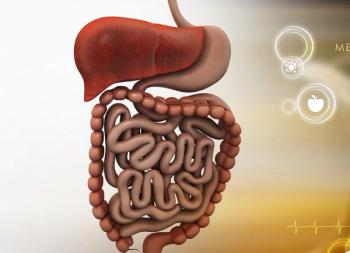
- ONCOLOGY Vol 16 No 9
- Volume 16
- Issue 9
Long-Acting Octreotide LAR Depot in the Treatment of Advanced Hepatocellular Carcinoma
Hepatocellular carcinoma (HCC) is the third most frequent cause of cancer death worldwide, causing 549,000 deaths in 2000-10% of all cancer deaths. There are strong etiologic associations with hepatitis C, hepatitis B, alcohol, other causes of cirrhosis, and dietary aflatoxins. The US incidence of HCC is 2.4/100,000 persons/year and rising due to the increased prevalence of hepatitis C.[1] After the current cohort of patients infected with the chronic hepatitis C virus passes, there will likely be a continued increase in the US incidence of HCC due to increasing rates of obesity-related nonalcoholic steatohepatitis, which causes many cases of "cryptogenic cirrhosis."
Hepatocellular carcinoma (HCC) is the third most frequentcause of cancer death worldwide, causing 549,000 deaths in 200010% of allcancer deaths. There are strong etiologic associations with hepatitis C,hepatitis B, alcohol, other causes of cirrhosis, and dietary aflatoxins. The USincidence of HCC is 2.4/100,000 persons/year and rising due to the increasedprevalence of hepatitis C.[1] After the current cohort of patients infected withthe chronic hepatitis C virus passes, there will likely be a continued increasein the US incidence of HCC due to increasing rates of obesity-relatednonalcoholic steatohepatitis, which causes many cases of "cryptogeniccirrhosis."
Few patients with HCC qualify for curative treatment.Comparing US Surveillance, Epidemiology, and End Results (SEER) data from the1987 through 1991 and 1991 through 1996 time periods, only 0.8% of patients inboth time periods underwent curative surgery.[1] Current treatments forearly-stage HCC, representing less than 20% of HCC seen at tertiary centers,include surgical resection, liver transplantation, and local ablation therapiesincluding percutaneous ethanol injection or radiofrequency ablation.[2,3] Formore than 80% of patients with advanced-stage HCC, chemotherapy is usuallyineffective because liver dysfunction enhances chemotherapy-inducedhepatotoxicity and portal hypertension with splenomegaly enhances cytopenias.[2,3]
Octreotide (Sandostatin) has antiangiogenic andantineoplastic properties, and there have been case reports of regression of HCCin patients treated with octreotide.[4] In 1998, Kouroumalis et al published theresults of a randomized controlled trial of octreotide in advanced HCC.[5]Patients were randomized to receive no therapy (n = 30) or 250 µg of octreotidesubcutaneously bid (n = 28). The groups were equally matched for the presence ofcirrhosis, gender, bilirubin, albumin, and Child-Pugh class. Octreotide had asignificant effect on patient outcome, with a median survival of 13 months inthe treated group vs 4 months in the untreated group (P = .002).[5]
Adverse effects included mild diarrhea in 40% of patients andtreatment discontinuation in 14% of patients because of the need forsubcutaneous administration twice daily. Fifty-four percent of patients reportedimproved overall well-being, 86% reported increased appetite, and 43% hadincreased weight gain.[5]
Currently, a number of pilot and advanced-phase studies oflong-acting octreotide LAR depot in advanced HCC are being conducted in Europeand the United States to assess tumor response.[6] Important objectives of thesestudies are to confirm the reported gains in survival and quality of life, toinvestigate the relationship of octreotide receptor status to response, and todetermine the optimal dosing of long-acting octreotide LAR depot in patientswith advanced HCC.
References:
1. El-Serag HB, Mason AC, Key C: Trends in survival ofpatients with hepatocellular carcinoma between 1977 and 1996 in the UnitedStates. Hepatology 33:62-65, 2001.
2. Aguayo A, Patt YZ: Nonsurgical treatment of hepatocellularcarcinoma. Semin Oncol 28:503-513, 2001.
3. Treiber G: Systemic treatment of hepatocellular carcinoma. Dig Dis 19:311-323, 2001.
4. Kouroumalis EA: Octreotide for cancer of the liver andbiliary tree. Chemotherapy 47(suppl 2):150-161, 2001.
5. Kouroumalis E, Skordilis P, Thermos K, et al: Treatment ofhepatocellular carcinoma with octreotide: A randomised controlled study. Gut42:442-447, 1998.
6. Dimitroulopoulos D, Tsamakidis K, Zisimopoulos A, et al:Efficacy of octreotide acetate long-acting formulation in treating patients withadvanced hepatocellular carcinoma. Gastroenterology 120(suppl 1):A560,2001.
Articles in this issue
over 23 years ago
The Molecular Basis of Cancer, 2nd Editionover 23 years ago
Management of Anemia in Patients With Cancerover 23 years ago
Commonly Used Quality of Life and Symptom Measurement Scalesover 23 years ago
Iron and the Anemia of Chronic Diseaseover 23 years ago
Recombinant Human Erythropoietin in Cancer-Related Anemiaover 23 years ago
When Is it Justified to Treat Symptoms? Measuring Symptom BurdenNewsletter
Stay up to date on recent advances in the multidisciplinary approach to cancer.

























































































